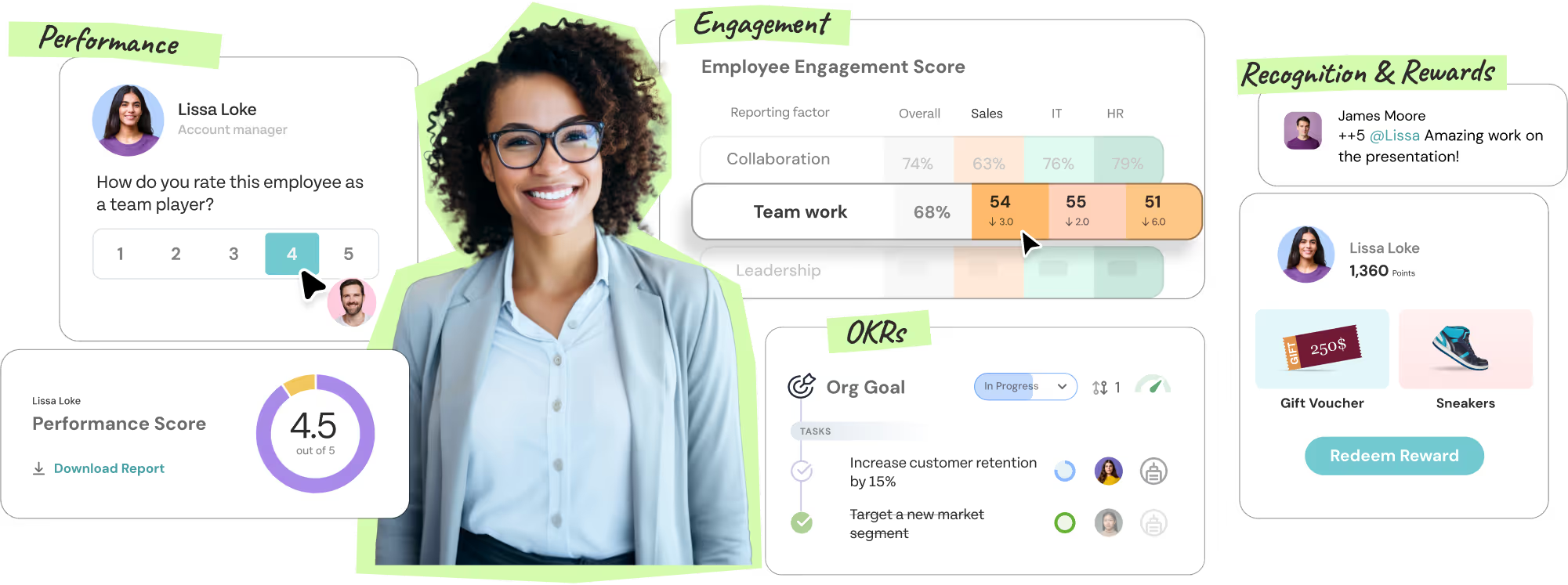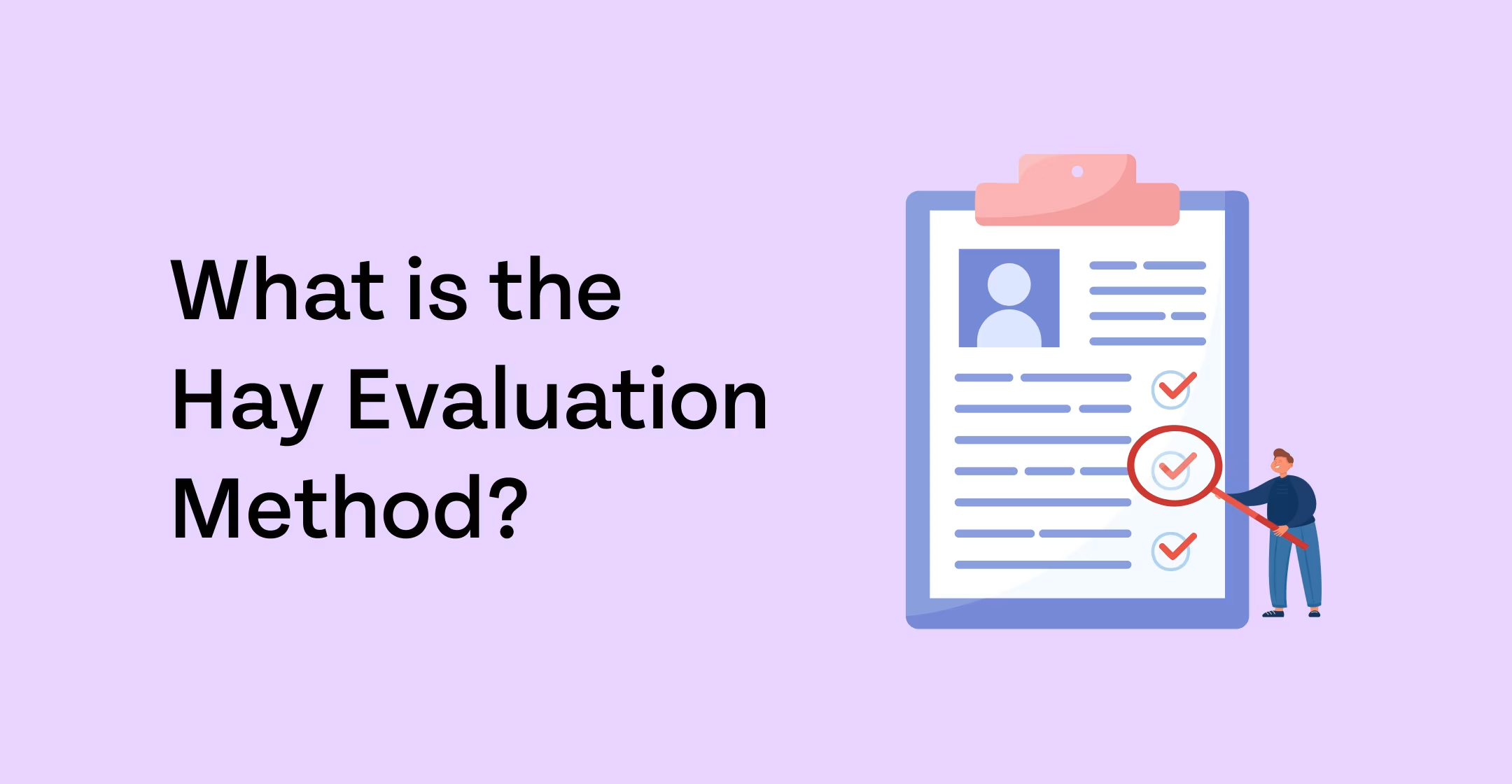Say you're the boss of a company with 100 workers. How do you decide who gets paid what? Should the person who answers phones make the same as someone who manages a whole team? This is where something called the Hay System comes in handy.
The Hay System is basically a fair way to figure out how much different jobs should pay. A man named Edward Hay created it back in the 1950s because he wanted to make workplace pay more fair.
In this blog, we'll explore how this simple system helps companies decide fair pay for everyone, from entry-level workers to top managers. We'll break down exactly how it works, share real examples, and show you step-by-step how to use it in any workplace
What is the Hay System?
The Hay System is basically a scorecard for jobs that helps companies figure out fair pay. It looks at every job through the same three areas: what you need to know to do it well, how hard the thinking is, and how much your decisions matter to the company. Think of it like grading a test - but instead of grading employees, you're grading jobs to make sure everyone gets paid fairly.
Why Do We Need Hay System?
Here's a problem that's still happening today: women who do the same job as men often get paid less. Right now, women earn about 84 cents for every dollar men make. That's not fair, right? Almost 3 out of every 5 companies now check their pay to make sure everyone gets treated equally.
The Hay System helps fix this by giving every job a score based on the same rules. No favorites, no guessing – just facts.
How Does Hay System Work?
The Hay System looks at every job through three main areas, plus one extra one :
1. Knowledge (What You Need to Know)
This covers all the stuff you need to learn to do your job well. It includes:
- Technical skills (like knowing how to use certain computer programs)
- Planning and organizing abilities
- People skills for talking with others
2. Problem Solving (How Hard You Have to Think)
Some jobs need you to solve easy problems, others need you to figure out really tough stuff. The system looks at:
- How much freedom you have to think of solutions
- How complex the problems are that you face
3. Accountability (How Much Your Job Matters)
This measures how much your job affects the company. It includes:
- How much freedom you have to make decisions
- How your work impacts the company's results
- How big the area is that you're responsible for
4. Working Conditions (The Tough Stuff)
If your job involves physical work, dangerous situations, or high stress, you get extra points. For example, a school bus driver might not need as much technical knowledge as an office worker, but they deal with safety issues every day, so their total score could end up being similar.
How to Set Up the Hay System
Want to try this at your company? Here's what you do:
- Write down what each job actually does – Get clear about what people are supposed to do every day
- Score the knowledge needed – How much training and skill does this job need?
- Rate the thinking required – Are they solving easy or hard problems?
- Measure the responsibility – How much does this job affect the company?
- Check working conditions – Is this job physically hard or stressful?
- Add up the points – Use special charts to turn your ratings into numbers
- Match points to pay – Jobs with similar scores should get similar pay
- Keep it updated – Check again when jobs change
Pros of Hay System
- Everyone gets judged the same way – No playing favorites
- It follows the law – Helps companies meet rules about equal pay
- Works for many jobs – You can use it for managers, technical workers, and front-line staff
- People trust it more – When companies explain how they decide pay, 91% of workers think it's fair
Cons of Hay System
- Takes a lot of time – Training people to use it takes days, and getting good at it takes months
- Can be expensive – All that time and training costs money
- Sometimes too rigid – The standard rules might not fit every company perfectly
Other Ways to Do It
If the Hay System seems like too much work, here are some simpler options :
- Point systems – Similar to Hay but easier to use
- Market pricing – Just look at what other companies pay for similar jobs
- Job ranking – Put jobs in order from most important to least important
- Pay for performance – Base pay on how well people do their jobs
The Bottom Line
The Hay System isn't perfect, but it gives companies a fair way to decide who gets paid what. When companies are open about how they make pay decisions, workers trust them a lot more.
As more places require companies to be transparent about pay, the Hay System help make sure everyone gets treated fairly. It's like having a referee in a game – someone to make sure everyone follows the same rules.
If you want to go beyond fair pay and create a comprehensive people management solution, ThrivesSparrow is your all-in-one employee engagement platform that combines performance management, goal tracking, and recognition tools to drive results and foster a positive workplace—perfectly complementing your compensation strategies.

Start your free 14-day trial!
What do you think? Have you ever wondered why some jobs pay more than others? The Hay System tries to answer that question in a way that's fair for everyone.
FAQs
1. How long does it take to implement the Hay System?
Training evaluators takes several days, and they need months of practice to become good at it. Most companies take 6-12 months to fully roll it out.
2. Can the Hay System work for all types of jobs?
Yes! It works for everyone from entry-level workers to top executives. The same three factors (knowledge, problem-solving, accountability) apply to all roles.
3. Is the Hay System expensive to use?
It can be costly because of the training time and ongoing maintenance. However, many companies find the investment worth it for fair, legally-compliant pay structures.
4. What's the difference between Hay System and other job evaluation methods?
The Hay System is more detailed and standardized than simple ranking methods. It's more structured than market pricing but takes more effort than basic point-factor systems.
5. Do employees actually trust the Hay System results?
When companies explain how they use the Hay System to decide pay, 91% of employees believe the process is fair. Transparency is key to building this trust.
















